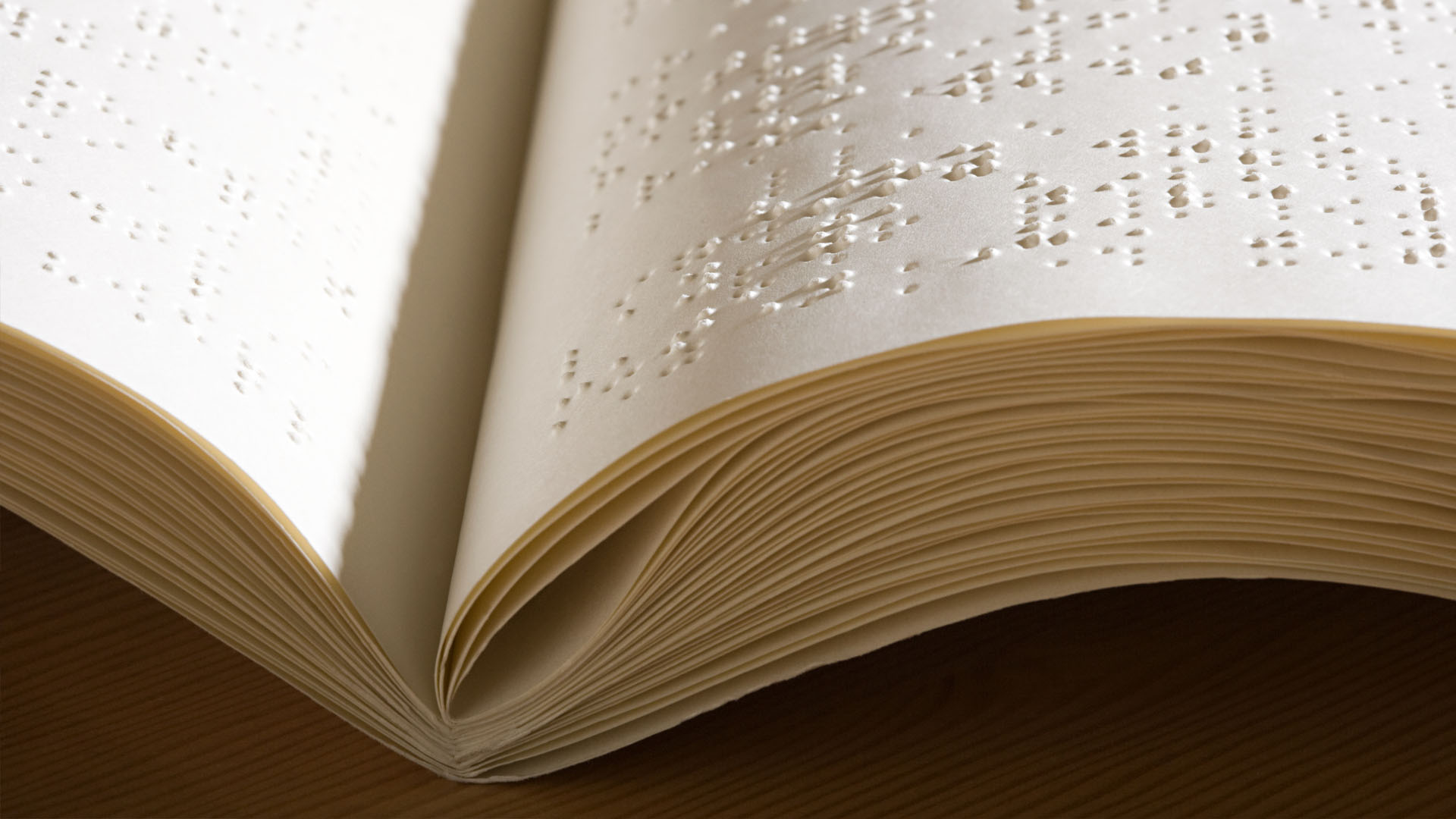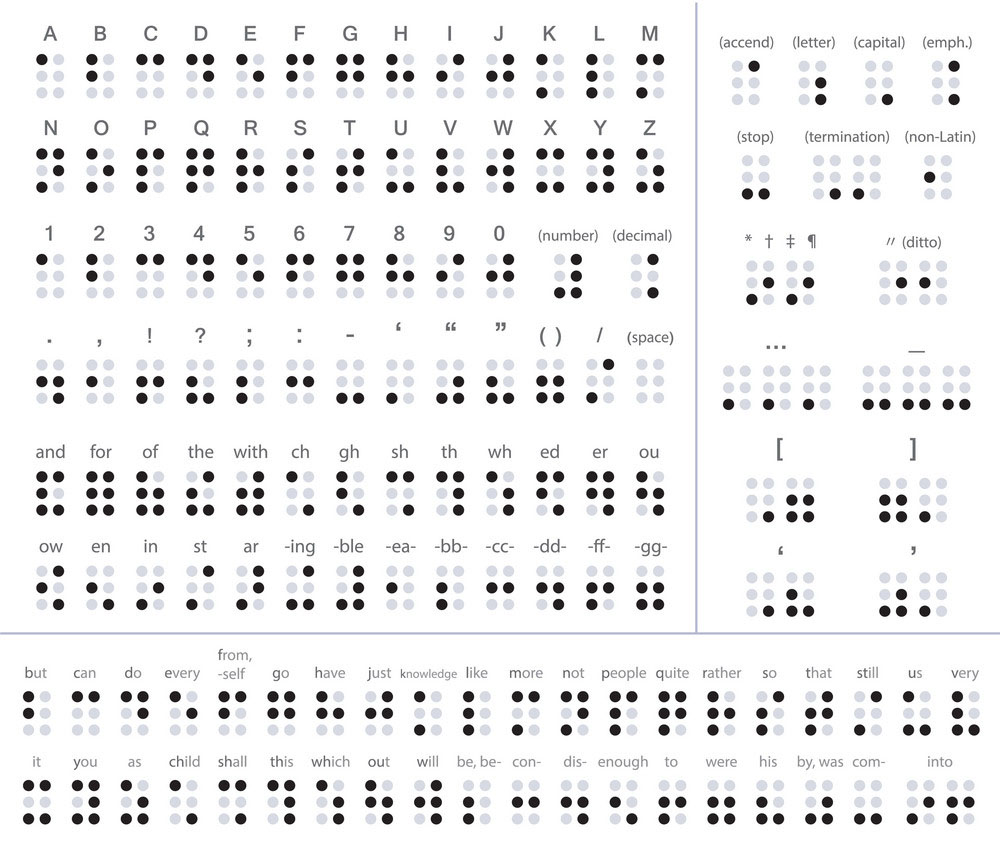 America has been going through a literary crisis for very long, specifically a Braille literary crisis because 90% of the blind children are not educated in Braille. Every individual, whether disabled or not, deserves to be educated and literate as the right to equality dictates everyone to be treated the same and get equal opportunities as well. The National Federation of the Blind (NFB) is trying hard to work on the crisis and bring about some change for the visually impaired in the U.S.
America has been going through a literary crisis for very long, specifically a Braille literary crisis because 90% of the blind children are not educated in Braille. Every individual, whether disabled or not, deserves to be educated and literate as the right to equality dictates everyone to be treated the same and get equal opportunities as well. The National Federation of the Blind (NFB) is trying hard to work on the crisis and bring about some change for the visually impaired in the U.S.
Every year as many as 75,000 people lose a part or the whole of their vision. And due to lowered Braille learning, around 70% of blind people remain unemployed and over 50% of blind students drop out of high school due to lack of proper education for them. This is because of lack of teachers, over-dependence on technology, misconceptions related to Braille, and lack of attention given to Braille instruction by the instructors or educational institutions.
 There is absolutely no doubt about the fact that Braille learning is the key to literacy, successful career and opportunities for the same, and access to novels or books. Every book can be converted into Braille with the help of a Braille translator. The NFB is working hard towards education and employment for the visually impaired.
There is absolutely no doubt about the fact that Braille learning is the key to literacy, successful career and opportunities for the same, and access to novels or books. Every book can be converted into Braille with the help of a Braille translator. The NFB is working hard towards education and employment for the visually impaired.
The federation has also listed down certain corrective measures to improve the situation and therefore acceptance with reference to Braille. One of them is advancing the use of the same in current and emerging technology which is certainly the future of Braille education.
A major conflict that parents face in America for the best course of action is about the print vs Braille confusion which the researchers are debating about. The children get caught up in this dilemma and suffer from lack of good Braille education. However, it is necessary to understand that the future repercussions should be kept in mind instead of just the immediate needs because by giving Braille education early in life not just helps them accept and adapt it but also helps them shape the career they wish.
Another misconception that has majorly been decoded now in the U.S. is about the isolation and stigmatization from the peers who read normally because Braille is completely different. There is no research to prove this, but it is true that not the peers, but the instructors do not give preference to teaching Braille and there has been a considerable lack of teachers or volunteers in all countries alike.
 Another proven theory is that the only way to have high self-esteem and lead productive lives is to be literate, which cannot be achieved simply through gadgets because such kind of a dependence can be risky. To be independent and self-made is very important and this has been realized by the researchers of the Braille crisis in America.
Another proven theory is that the only way to have high self-esteem and lead productive lives is to be literate, which cannot be achieved simply through gadgets because such kind of a dependence can be risky. To be independent and self-made is very important and this has been realized by the researchers of the Braille crisis in America.
These criticisms and resolutions are aiming to bring about significant changes in the usage of Braille. It is time to ensure that no blind child goes without Braille instruction if that is what they wish for. Learn more about the history and the current use of Braille in the society.



 The Amazon Fire tablet Braille support might not be the perfect package yet, but it is certainly a very helpful device, especially for people who prefer reading devices. Amazon basically changed how it integrated Braille, and instead, it was incorporated directly into Fire Tablet’s ‘VoiceView’. Since then several updates have been made from the primarily released read-only tablet. The process of pairing the Braille display is firstly going to Accessibility> VoiceView > Braille > search for devices and then finally select the display from the given list.
The Amazon Fire tablet Braille support might not be the perfect package yet, but it is certainly a very helpful device, especially for people who prefer reading devices. Amazon basically changed how it integrated Braille, and instead, it was incorporated directly into Fire Tablet’s ‘VoiceView’. Since then several updates have been made from the primarily released read-only tablet. The process of pairing the Braille display is firstly going to Accessibility> VoiceView > Braille > search for devices and then finally select the display from the given list.
 A ballot box guide enables a visually impaired individual to vote through determining each voting box. A ballot can be pulled out or in by the voter because it is hinged. These boxes are arranged and labeled in braille for each candidate or party. In the years 2015 and 2017, from Mexico, the
A ballot box guide enables a visually impaired individual to vote through determining each voting box. A ballot can be pulled out or in by the voter because it is hinged. These boxes are arranged and labeled in braille for each candidate or party. In the years 2015 and 2017, from Mexico, the  A guide is also used in several places to facilitate voter’s signatures by keeping their hand steady so that they can easily find a grip and with the help of someone else they can sign their vote. The box for sign becomes easy to identify for the visually impaired citizens. This format is used in Costa Rica.
A guide is also used in several places to facilitate voter’s signatures by keeping their hand steady so that they can easily find a grip and with the help of someone else they can sign their vote. The box for sign becomes easy to identify for the visually impaired citizens. This format is used in Costa Rica.
 The Supreme Tribunal for Electoral Justice of Paraguay since 2015 provides upon request a magnifying glass for visually impaired people. In Mexico also magnifying sheets are an option.
The Supreme Tribunal for Electoral Justice of Paraguay since 2015 provides upon request a magnifying glass for visually impaired people. In Mexico also magnifying sheets are an option. Paraguay also has pencil grip on special request which makes it easier for impaired people to vote properly on the ballot.
Paraguay also has pencil grip on special request which makes it easier for impaired people to vote properly on the ballot. Mexico’s election commission provides an assistive stamp device which has an ‘x’ in the bottom that makes it easier to locate the point of the stamp and an elastic grip for easier holding.
Mexico’s election commission provides an assistive stamp device which has an ‘x’ in the bottom that makes it easier to locate the point of the stamp and an elastic grip for easier holding.







 The primary ten letters of the alphabet are created by utilizing the four top dots- 1,2,4, and 5. By adding the 3 dots, the next ten letters are formed and adding the 6 dot makes the last six letters. However, one exception of ‘w’ does exist. It was not utilized very often in the French language when Louis Braille had created this system. Punctuation is presented through its own different set of dots which are usually found in the bottom or lower part of a ‘cell’.
The primary ten letters of the alphabet are created by utilizing the four top dots- 1,2,4, and 5. By adding the 3 dots, the next ten letters are formed and adding the 6 dot makes the last six letters. However, one exception of ‘w’ does exist. It was not utilized very often in the French language when Louis Braille had created this system. Punctuation is presented through its own different set of dots which are usually found in the bottom or lower part of a ‘cell’.